A rare fish gets a second chance
Restoring stream habitat in Pennsylvania and Maryland is helping save the Chesapeake logperch
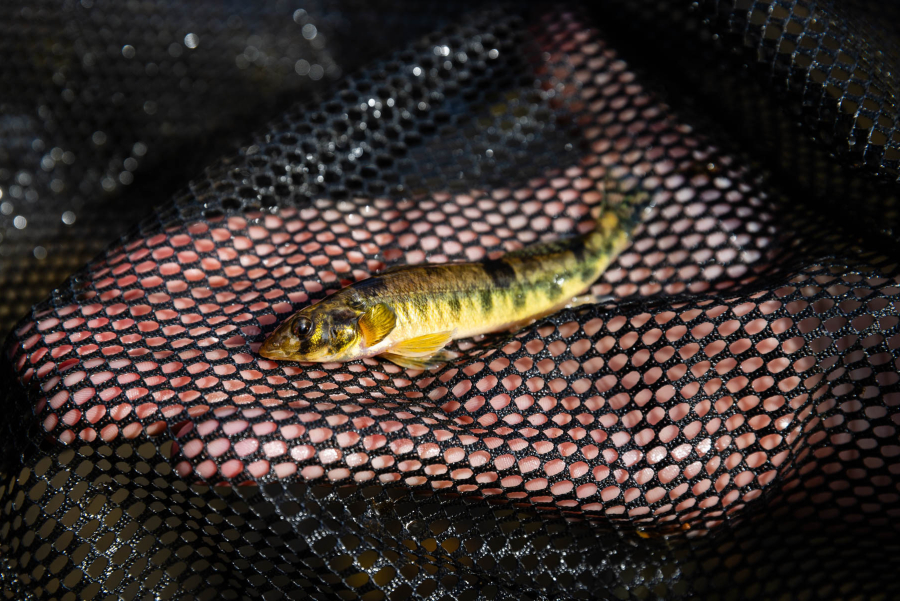
A case of mistaken identity could have doomed the Chesapeake logperch, a four-inch species of darter fish—colorful and quick-moving with dark bars along its sides. It was first identified in 1842 in the lower Susquehanna River watershed, where it roots around wide, gravelly streambeds with a stubby nose similar in shape to a pig’s.
“They use it for almost exactly the same thing—they’ll flip rocks with it,” said Doug Fischer, a biologist with the Pennsylvania Fish and Boat Commission (PFBC) who has worked with the Chesapeake logperch since the early 2000s.
Unfortunately, despite its initial identification over 150 years ago, the Chesapeake logperch was mistakenly lumped in taxonomically with a different species, the common logperch. It wasn’t until 2008 that genetic evidence made it clear that the Chesapeake logperch was a distinct—and globally rare—species. Its historic range only extended through the lower Susquehanna River watershed, the Potomac River watershed and some direct tributaries of the Chesapeake Bay. And that habitat has changed dramatically in modern times.
“If you look at all the old pictures of the lower [Susquehanna] River…it is not the same,” Fischer said. “That was a rocky, high-gradient section, and now it's a series of sediment-laden pools.”
A number of threats took their toll while the Chesapeake logperch swam under the radar. Pollution was the prime culprit in its disappearance from many parts of its range, along with introduced species and large impassable dams. Sediment from eroding stream banks smothers the cobblestone crevices where the fish finds food and shelter.
The Chesapeake logperch disappeared from the Potomac portion of its range by the 1930s. Similar pressures have already taken out a similar species, the Maryland darter, which hasn’t been seen since the 1980s.
But with new recognition came new research into the life history of the Chesapeake logperch, which is only just beginning to be revealed. And it also jump-started state and federal efforts to restore populations to tributaries where it had been lost, so that the state-listed threatened species would not have to be put on the federal endangered species list.
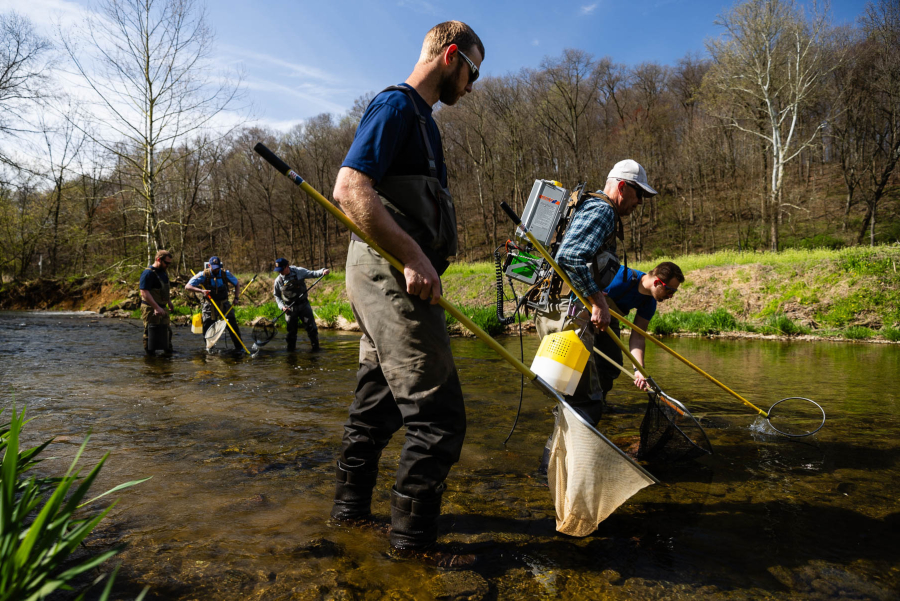
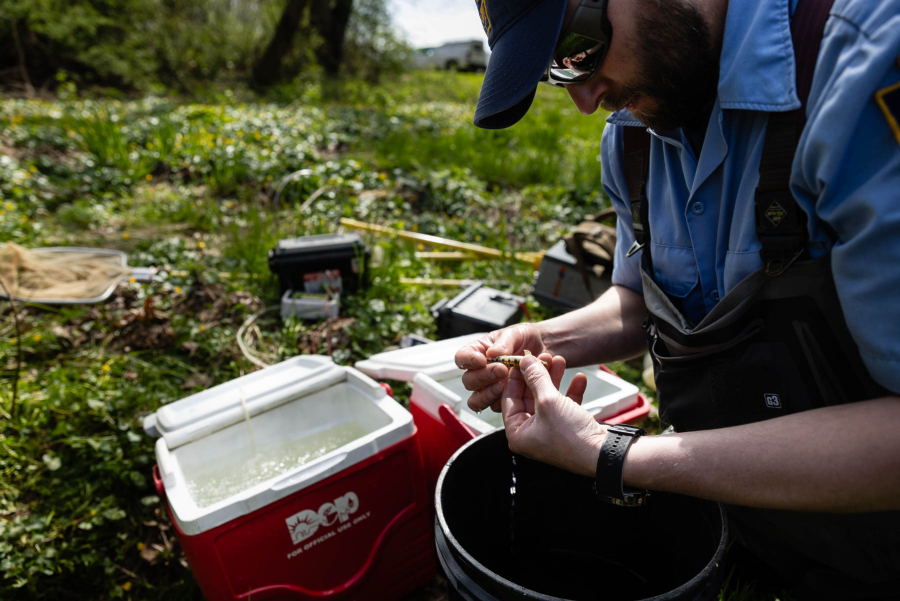
“The Chesapeake logperch is on [the U.S. Fish and Wildlife Service’s (USFWS)] radar for potential listing,” Fischer said. “And the conservation actions that we've undertaken are squarely designed to keep it from getting listed.”
Initial results have been promising. Logperch have appeared in stretches of restored streams, such as after a 2018 project on Peters Creek in Pennsylvania’s Lancaster County. And since 2019, the Chesapeake logperch has proven to be a species well-suited to hatchery rearing efforts. Both PFBC and USFWS now operate hatcheries that have produced young Chesapeake logperch for reintroduction.
“We've seen more fish in more places show up, as time has gone on,” Fischer said.
Since 2020, the species has gotten another boost from a project led by the nonprofit Alliance for the Chesapeake Bay (ACB) to plant trees along streams in Maryland and Pennsylvania watersheds where the Chesapeake logperch is known to exist. Known as riparian forest buffers, trees planted on streams help stabilize streambanks, absorb nutrient pollution from nearby farm fields, cool down water temperatures and otherwise recreate the favorable conditions for wildlife that existed when the Chesapeake Bay watershed was largely covered in forest.
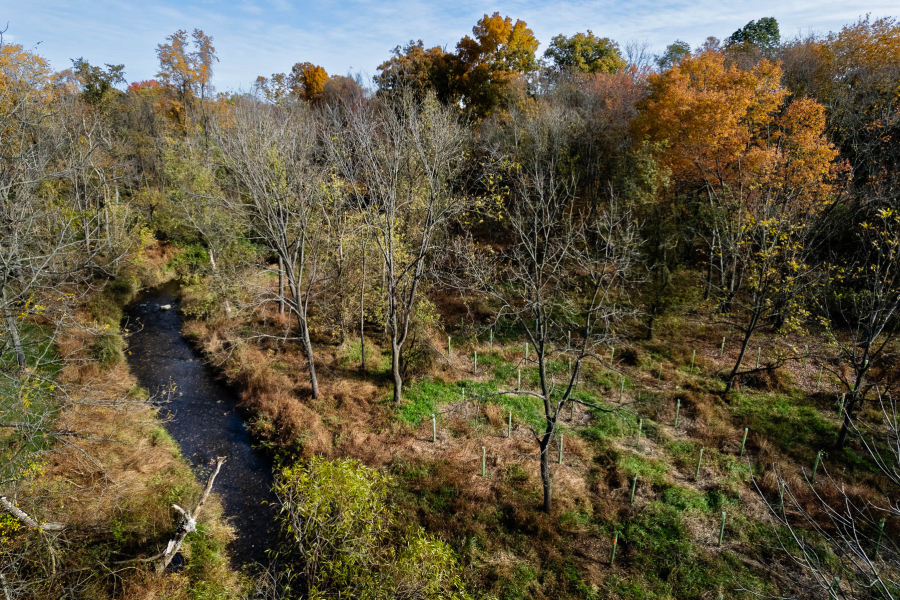
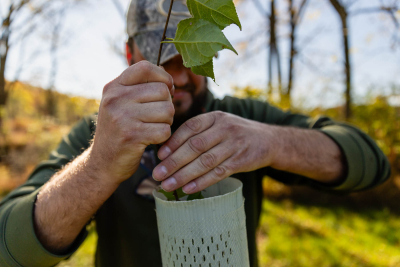
“We were trying to incentivize agricultural producers to put in forest buffers by offering them a conservation voucher,” said Craig Highfield, director of ACB’s Forests Program. Farmers could receive $4,000 per acre to buffer streams flowing through their property. Or if they found another program to fund a buffer, they could put that voucher toward another conservation practice that a farmer was interested in.
“We're helping these producers pay a significant portion that would have come out of their wallets,” Highfield said.
The work resulted in 187 acres of new riparian forest buffers planted on farms, and was supported with roughly $500,000 from the National Fish and Wildlife Foundation’s (NFWF) Chesapeake Stewardship Fund’s Small Watershed Grants program. This grant program is funded by the Environmental Protection Agency and designed to meet the goals of the Chesapeake Bay Program.
Under the program, a beef operation owned by Tim White in York County, Pennsylvania, was one of the first farms to receive trees, ultimately planting roughly 8.5 acres of new forest buffer in 2020 and 2021. After three years, the oldest of the trees are now standing firmly above their protective white plastic tree tubes, interspersed with stands of mature trees along Leibs Creek, a tributary of Muddy Creek that feeds into the Susquehanna.
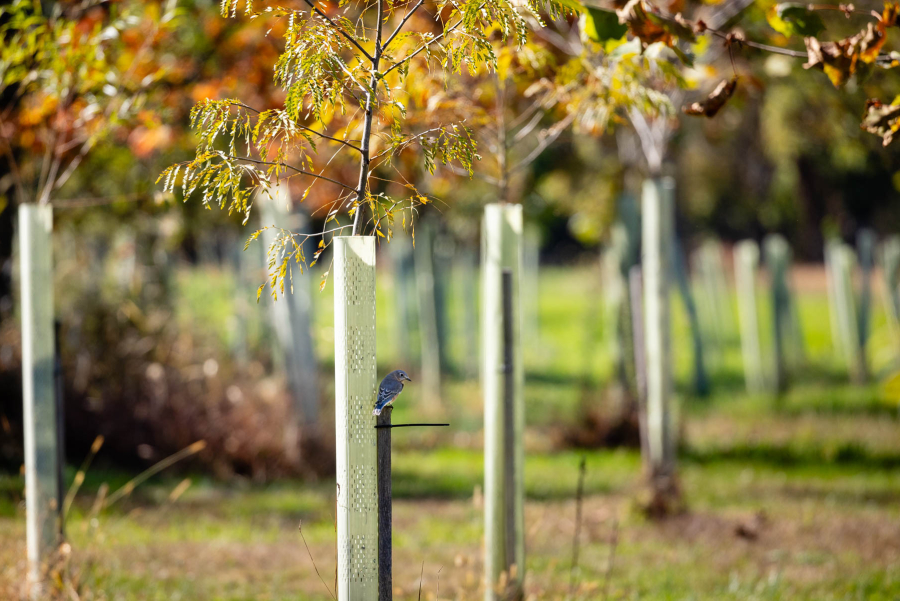
“Just because of how quickly we were able to get the buffers with our program for logperch, NFWF granted us another grant to continue working in that geography, but to open it up outside of logperch,” Highfield said.
Despite the focus on logperch, it was the Muddy Creek Trout Unlimited that initially helped link the farm with the buffer project. Leibs Creek, with trees casting dappled shade over gentle currents, is home to a wild population of brown troutand all the macroinvertebrates that support fish species of various kinds. Indeed, the forest buffers will improve conditions for the logperch as well as other wildlife in Muddy Creek, the Susquehanna and the Chesapeake Bay. And where pollution once pushed out the Chesapeake logperch, it might once again use its snout to find a meal amid the stony riffles.

Comments
There are no comments.
Thank you!
Your comment has been received. Before it can be published, the comment will be reviewed by our team to ensure it adheres with our rules of engagement.
Back to recent stories